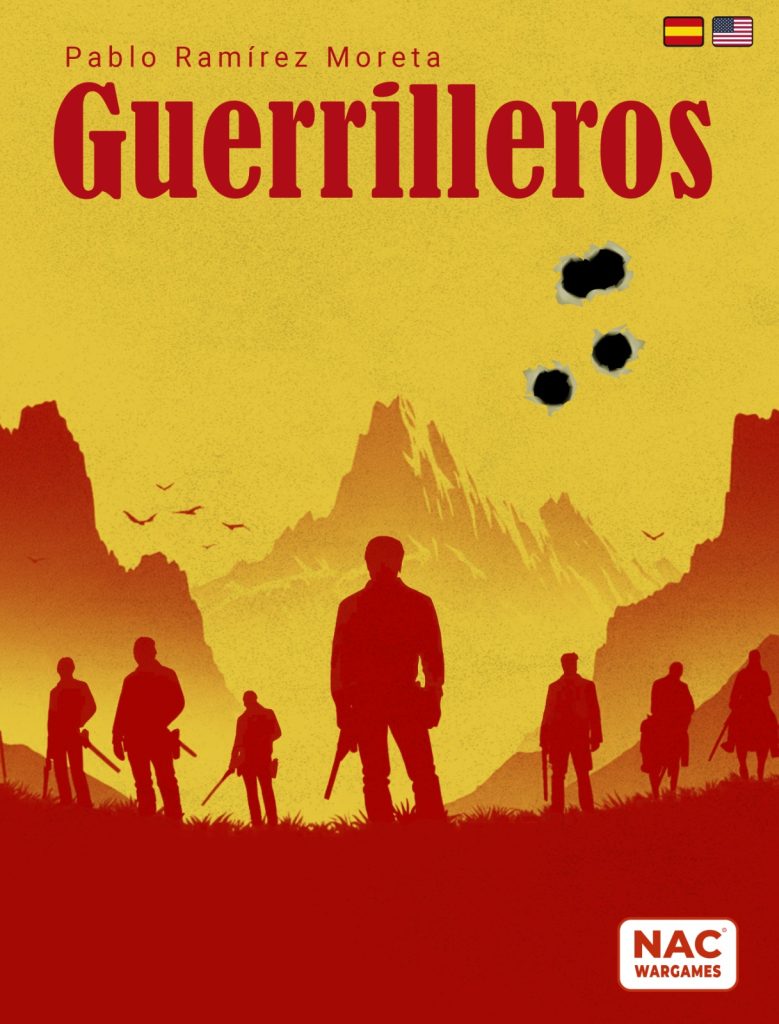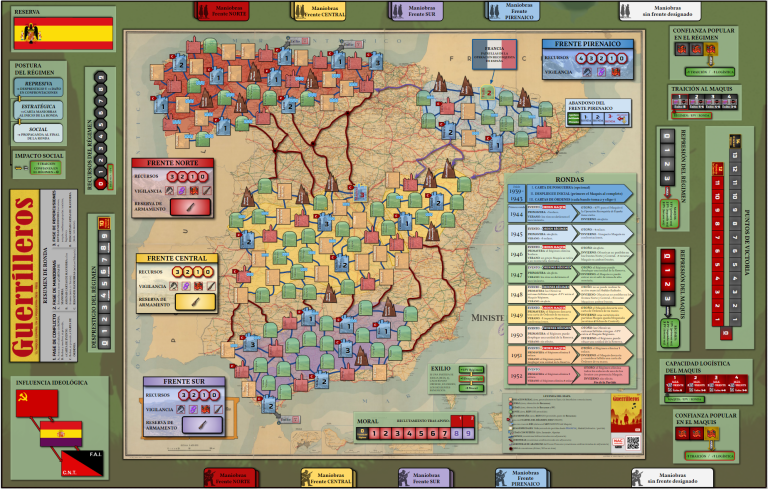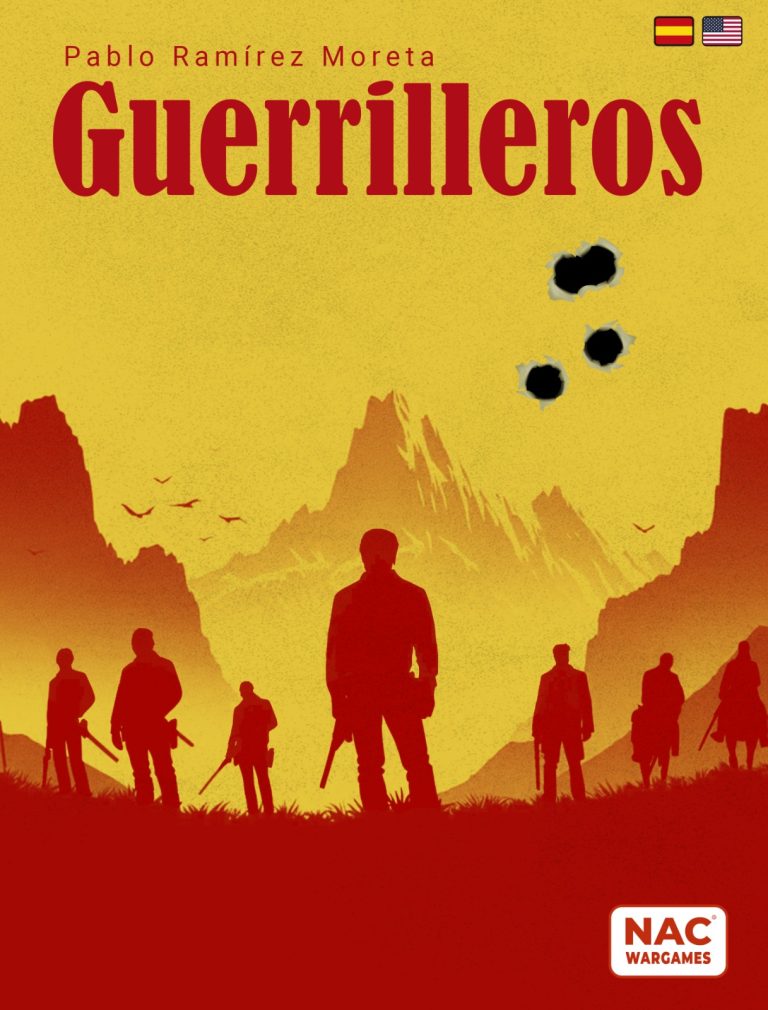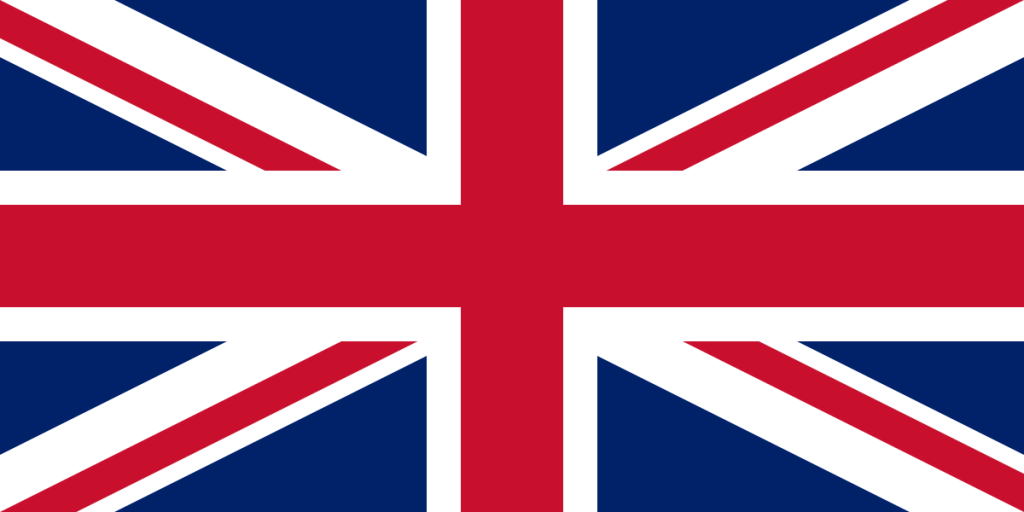
Look for the blue banner below and read this entry in English!
Una vez descrito todo lo «teórico» en la entrada anterior, pasemos a lo práctico.
En esta entrada puedes encontrar un caso práctico de enfrentamiento, en concreto, un ejemplo de confrontación en Trujillo (área de Pueblo del Frente Central).
CONFRONTACIÓN EN TRUJILLO
Un CHEQUEO DE CONFRONTACIÓN realizado por unidades del Régimen que habían entrado en el área de Trujillo (donde había partidas Maquis) ha resultado exitoso (explicaré los chequeos en otro post).

Por tanto, las fuerzas de ambos bandos se encuentran en el área y habrá una confrontación. Para indicarlo, se coloca una ficha de chequeo de Confrontación exitoso.
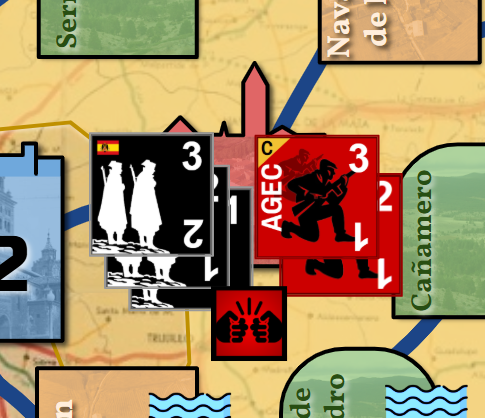
ETAPA 1: DÍA O NOCHE
El Régimen ha maniobrado así que es el atacante. Lanza un dado y obtiene un «3»: si vence, podrá perseguir las unidades Maquis supervivientes y volver a combatir con ellas. Esto lo tendrá que decidir al terminar la etapa 4 de Daños Colaterales.

ETAPA 2: INICIATIVA
De nuevo, el Régimen, por ser atacante, lanza un dado y obtiene un «1». Al ser un área de Pueblo, consulta la tabla y ve que vencerá en caso de empate en el combate.

ETAPA 3: COMBATE
La distribución de unidades de este enfrentamiento es la siguiente:

- MAQUIS: dos partidas, una de Fuerza 3/1 y otra de fuerza 2/1. Al estar a plena potencia, se tienen en cuenta sus valores más altos: 3 y 2.
- RÉGIMEN: tres patrullas, de Fuerza 3/2, 2/1 y 1/-. También están a plena potencia así que sus valores serán 3,2, y 1.
La POTENCIA TOTAL de cada bando es un dado por unidad combatiente. El Maquis puede recibir hasta 2 dados por sendos Enlaces situados a menos de 1 área de distancia del combate, y el Régimen puede recibir otro dado por tener al menos una unidad en Retaguardia, es decir, en áreas adyacentes. Ninguno de ellos dispone de Enlaces, Retaguardia o Armamento (Maquis) así que las POTENCIAS TOTALES son: 2 dados para el Maquis y 3 para el Régimen (un dado por unidad).
Los IMPACTOS que hará cada bando dependen de su mejor unidad. En el caso del Maquis, su mejor unidad tiene Fuerza 3, así que hará impactos a 3 o menos (es decir, con TODOS los dados que obtengan 3,2,1). En el caso del Régimen, su mejor unidad coincide que tiene Fuerza 3 así que también hará impactos a 3 o menos.
Ambos bandos lanzan los dados:
El Maquis obtiene «1», «4». El Régimen obtiene «2», «5», «5».
- El Maquis hace un impacto («1») y obtiene un «4» que no es impacto. Si hubiera obtenido dos o más «4», habría obtenido cobertura y, por tanto, evitado un daño del Régimen. Como no ha sido el caso, este resultado no tiene utilidad para el Maquis.
- El Régimen hace un impacto («2») y obtiene dos «5» que, si el «2» no se convierte en impacto, provocarán daños colaterales.

El VENCEDOR será el bando que haya obtenido más impactos. Como ambos tienen un impacto, el combate debería resultar en un empate. Sin embargo, gracias al beneficio obtenido de la iniciativa (etapa 2), el Régimen resulta VENCEDOR del combate.
La CONVERSIÓN DE IMPACTOS EN DAÑOS es automática: cada bando asigna hasta un dado de impacto realizado a cada unidad propia siempre que el resultado sea igual o inferior a su Fuerza.
- El Maquis ha realizado un impacto así que puede asignar el «1» a cualquiera de las dos unidades porque ambas tienen Fuerza superior a ese valor. Es decir, el impacto del Maquis se convierte en un daño hecho al Régimen.
- El Régimen puede asignar el «2» a una unidad propia con Fuerza 2 o 3, pero no puede haberlo hecho la de Fuerza 1. Como no tiene más impactos que asignar, el impacto del Régimen también se convierte en un daño realizado por cualquiera de las dos unidades.

La COBERTURA permite evitar un daño recibido. Se obtiene si;un bando obtiene dos o más «4» pero ninguno lños ha obtenido así que ambos bandos reciben todo el daño infligido por el rival. El «4» del Maquis, por tanto, no tiene efecto alguno.
La ASIGNACIÓN DE DAÑOS es sencilla: tanto el Maquis como el Régimen reciben 1 DAÑO del rival.
Un daño recibido obliga a PERDER UN PASO de una unidad propia a elección del jugador. El Maquis decide asignarle el daño a su unidad más débil (2/1) de modo que ahora rotará 180 grados y tendrá Fuerza 1. El Régimen hace lo propio y decide asignarle el daño a su unidad más débil (1/-) porque no quiere perder a sus tropas expertas, así que elimina tal unidad (retorna a la Reserva).

El Régimen, como vencedor del combate, recibe el BENEFICIO de reducirle 1 punto de Moral al Maquis. Como la unidad 1/- sólo tiene un paso, la unidad es eliminada (vuelve a la Reserva del Régimen). Además, como ningún bando ha eliminado al menos una unidad experta, no hay más pérdidas de Moral o Prestigio.
ETAPA 4: DAÑOS COLATERALES
Ambos bandos pueden sufrir perjuicios por DAÑOS COLATERALES, independientemente de han sido o no los vencedores del combate. Como los dos bandos han podido convertir todos sus impactos en daños, ninguno sufre perjuicios por daños colaterales.

ETAPA 5: RETIRADA
La RETIRADA del bando vencido sólo se produce en Incursiones, no en Confrontaciones, así que todas permanecen en el área del enfrentamiento.
¿FIN DEL ENFRENTAMIENTO?
Como beneficio de la etapa 1 (Día o Noche), este combate se ha producido de día y con POSIBILIDAD DE PERSECUCIÓN. Es decir, el Régimen debe decidir en este instante si perseguir o no a las fuerzas del Maquis y entablar un nuevo combate.
Decide hacerlo, así que comienza un COMBATE EN PERSECUCIÓN: se repiten las etapas 3 y 4 (y ya no se disfrutan los beneficios de las etapas 1 y 2).
ETAPA 6 (NUEVA ETAPA 3): COMBATE EN PERSECUCIÓN
La distribución de unidades de este nuevo combate es:
- MAQUIS: dos partidas, una de Fuerza 3/1 y otra de fuerza 1/2. Ahora sólo hay una a plena potencia, y la otra está debilitada, sus valores de Fuerza serán: 3 y 1.
- RÉGIMEN: dos patrullas, de Fuerza 3/2, 2/1. Siguen a plena potencia así que sus valores serán 3 y 2.

La POTENCIA TOTAL del Maquis es 2 dados (uno por unidad participante) y otros 2 para el Régimen.
Los IMPACTOS que hará cada bando los marca su mejor unidad, así que en ambos casos resultados de 3, 2 y 1 serán impactos.
Ambos bandos lanzan los dados. El Maquis obtiene «4», «4». El Régimen obtiene «1», «3».
- El Maquis no hace impactos pero obtiene dos «4», es decir, obtiene cobertura que le permitirá bloquear un daño recibido.
- El Régimen hace dos impactos.

El VENCEDOR es el Régimen por haber obtenido dos impactos frente a ninguno del Maquis.
El Régimen convierte los IMPACTOS EN DAÑOS porque puede asignar cada dado: el 3 lo asigna a la unidad de Fuerza 3, y el 1 lo asigna a la otra unidad, cumpliendo en ambos casos que el resultado fuera igual o inferior a la Fuerza de la unidad que lo realiza.
Se contabilizan y ASIGNAN LOS DAÑOS infligidos al rival: el Maquis no hace ninguno pero recibe dos daños del Régimen. El Régimenpuede realizar el daño del impacto de valor «3» únicamente con la unidad de fuerza 3 (¡la otra tiene fuerza menor!), y el daño del impacto de valor 1 con la unidad restante. Sin embargo, por haber conseguido COBERTURA (dos «4»), puede cancelar uno de los daños y recibir sólo un daño.

Debido a ese daño, el Maquis PIERDE UN PASO y decide hacerlo sobre la unidad que ya tenía dañada. Como no tiene más pasos que perder, la unidad es eliminada de la partida.

El BENEFICIO del Régimen es descender un punto más la Moral del Maquis por haber vencido de nuevo. Al no haber eliminado una agrupación guerrillera, no pierde más Moral.
La RETIRADA tampoco se produce en esta ocasión (no es una Incursión) así que las unidades de ambos bandos permanecen en el área del enfrentamiento, Trujillo.

ETAPA 7 (NUEVA ETAPA 4): : DAÑOS COLATERALES DE LA PERSECUCIÓN
Como el Régimen ha conseguido convertir todo impacto en daño al Maquis, no hay daños colaterales en esta ocasión tampoco.
ETAPA 8 (NUEVA ETAPA 5): RETIRADA DE LA PERSECUCIÓN
Por la misma razón que antes (no es una Incursión), no hay retirada.
FIN DEL ENFRENTAMIENTO
Después de una persecución, el enfrentamiento siempre termina.
NUEVOS ENFRENTAMIENTOS
Si las unidades vencidas han tenido que abandonar el área, podría iniciarse un nuevo enfrentamiento en el área de retirada si está ocupada por fuerzas rivales.
En la próxima entrada, podrás ver cómo funciona una Incursión.
– Pablo, autor de Guerrilleros
Para ayudar a que Guerrilleros sea publicado, puedes inscribirte en el programa P500 de NAC Wargames de forma gratuita y sin compromiso de compra.
Entra en la web dedicada a Guerrilleros y haz clic en el botón «Apúntame» (sólo necesitarás una cuenta de MasQueOca, ¡es fácil!). ¡Muchas gracias!

English version
Having described all the «theoretical» aspects in the previous entry, let’s move on to the practical. In this entry you can find an example of a confrontation, specifically a confrontation in Trujillo (Town area of the Central Front).
CONFRONTATION IN TRUJILLO
A CONFRONTATION CHECK carried out by Regime units that had entered the Trujillo area (where there were Maquis parties) has been successful (I will explain the checks in another entry).
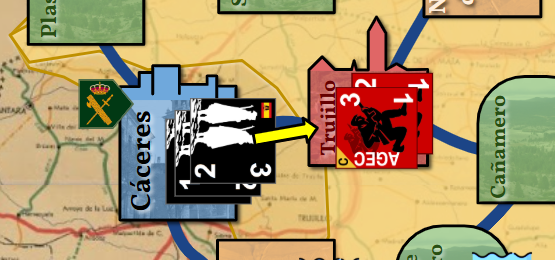
Therefore, forces from both sides take part in a confrontation. To indicate this, place a successful Confrontation check token.

STAGE 1: DAY OR NIGHT
The Regime has manoeuvred so it is the attacker. It rolls a die and checks the table for DAY OR NIGHT. A «3» means that if the Regime wins, the remaining units may chase the surviving Maquis units and combat them again. This will have to be decided at the end of stage 4, Collateral Damage.

STAGE 2: INITIATIVE
Again, the Regime, being the attacker, rolls a die and check the INITIATIVE table. A «1» in a Town area means: the Regime will win in ties. Therefore, in this combat, there can be no draw at all.

STAGE 3: COMBAT
The distribution of units in this confrontation is as follows:

- MAQUIS: two partidas, one of strength 3/1 and one of strength 2/1. When at full strength, their highest values are taken into account: 3 and 2.
- REGIME: three patrols of strength 3/2, 2/1 and 1/-. They are also at full strength so their values will be 3,2, and 1.
Each side’s TOTAL POWER is calculated by collecting one die per combat unit. The Maquis may receive up to 2 dice for each of two Links (‘Enlaces’, aiding civilians) within 1 area of the combat, and the Regime may receive another die for having at least one unit in Rear, i.e., in any adjacent area. Neither side has support from Links, Rear units or Armament (Maquis) so the TOTAL POWERS are: 2 dice for the Maquis and 3 dice for the Regime (one die per unit).
The HITS each side will make depends on its best unit. In the case of the Maquis, its best unit has strength 3, so it will make hits at 3 or less (i.e., with ALL dice rolling 3,2,1). In the case of the Regime, its best unit happens to have strength 3 as well so it will also make hits at 3 or less.
Both sides roll the dice:
The Maquis gets «1», «4». The Regime gets «2», «5», «5».
- The Maquis makes a hit («1») and gets a «4» which is not a hit. Had he scored two or more «4», he would have obtained cover and thus avoided one damage from the Regime. As this was not the case, this result is of no use to the Maquis.
- The Regime makes a hit («2») and gets two «5»s which, if the «2» does not become a hit, will cause collateral damage.

The WINNER is the side that has scored the most hits. As both have one hit, the engagement should result in a draw but, thanks to the initiative benefit (step 2), the Regime is the WINNER of the combat.
The CONVERSION OF HITS INTO DAMAGE is automatic: each side assigns up to one hit die to each of its own units as long as the result is equal to or less than its Strength.
- The Maquis has made one hit so he can assign the «1» to either unit because both have Strength above that value. That is, the Maquis hit becomes damage done to the Regime.
- The Regime may assign the «2» to a Force 2 or 3 unit of its own, but it may not have done so to a Force 1 unit. Since it has no more hits to assign, the Regime’s hit also becomes damage done by either unit.

COVER allows you to avoid taking a maximum of one damage. It is granted if one side gets two or more «4» results but neither side has got them so both sides take all the damage inflicted by the opponent. The Maquis’ «4» therefore has no effect.
The DAMAGE ALLOCATION is simple: both the Maquis and the Regime take 1 DAMAGE from the opponent.
Damage taken results in STEP LOSSES from a unit/s of the player’s choice. The Maquis decides to assign damage to his weakest unit (2/1) so it is now rotated 180 degrees to show Strength 1. The Regime does the same and decides to assign damage to its weakest unit (1/-) because they do not want to lose its expert troops. So, it eliminates that unit (returns to Reserve).

The Regime, as the victor of the combat, receives the BENEFIT of reducing the Maquis by 1 Morale point. As the 1/- unit has only one step, the unit is eliminated (returns to the Regime Reserve). Also, since neither side has eliminated at least one expert unit, there are no further losses of Morale or Prestige.
STAGE 4: COLLATERAL DAMAGE
Both sides can be harmed by COLLATERAL DAMAGE, regardless of whether or not they have been the victors of the combat. In this example, as both sides have been able to convert all their impacts into damage, neither side suffers collateral damage.

STAGE 5: RETREAT
Defeated side RETREAT only occurs in Incursions, not in Confrontations, so they all remain in the engagement area.
END OF THE ENGAGEMENT?
As a benefit of Stage 1 (Day or Night), this combat has occurred in daylight and with the POSSIBILITY OF PERSECUTION. That is, the Regime must now decide whether or not to chase the surviving Maquis forces and engage in further combat.
The Regime player decides to do so, and a PERSECUTION COMBAT ensues: stages 3 and 4 are repeated (and the benefits of stages 1 and 2 are no longer enjoyed).
STAGE 6 (NEW STAGE 3): COMBAT IN PURSUIT
The distribution of units in this new combat is as follows:
- MAQUIS: two partidas, one at strength 3/1 and the other at strength 1/2. Now there is only one at full strength, and the other is weakened, their Strength values will be: 3 y 1.
- REGIME: two patrols, Force 3/2 and 2/1. They are still at full strength so their values will be 3 and 2.

The Maquis TOTAL POWER is 2 dice (one per participating unit), and another 2 for the Regime.
The IMPACTS each side will make are set by its best unit, 3 in both cases so results of 3, 2 and 1 will qualify as hits.
Both sides roll the dice. The Maquis rolls «4», «4». The Regime gets «1», «3».
- The Maquis makes no hits but gets two «4», i.e. it gets cover that will allow them to block incoming damage.
- The Regime rolls «1», «3» so it scores two hits.

The WINNER is the Regime for having scored two hits against none for the Maquis.
The Regime converts HITS INTO DAMAGE because it can assign each hit die: the 3 is assigned to the Force 3 unit, and the 1 is assigned to the other unit, provided in both cases that the result was equal to or less than the Strength of the performing unit.
DAMAGE inflicted on the opponent is counted and ALLOCATED: the Maquis does none but takes two damage from the Regime. The Regime can inflict the «3» hit damage only with the 3-strength unit (the other is 2, lower strength, so not applicable!), and the 1-strike damage with the remaining unit. However, the Maquis’ COVER (two «4’s») cancels one of the two damages.

Because of that damage, the Maquis LOSES ONE STEP and decides to do so on the unit that was already damaged. As it has no more steps to lose, the unit is eliminated from the game.

The BENEFIT of the Regime is to lower one more point the Morale of the Maquis for having defeated again. Not having eliminated a guerrilla grouping, it does not lose any more Morale.
RETREAT does not occur on this occasion either (it is not an Incursion) so units from both sides remain in the area of confrontation, Trujillo.

STAGE 7 (NEW STAGE 4): COLLATERAL DAMAGE OF THE CHASE
As the Regime has managed to turn all impacts into damage to the Maquis, there is no collateral damage this time either.
STAGE 8 (NEW STAGE 4): RETREAT AFTER THE CHASE
Again, no retreat takes place in Confrontations, only in Incursions.
END OF ENGAGEMENT
After a chase, the engagement always ends.
NEW ENGAGEMENTS
If the defeated units have had to leave the area, a new engagement might begin in the retreat area if it is occupied by opposing forces.
In the next entry, you will see how an Incursion works.
– Pablo, designer of Guerrilleros
To help Guerrilleros get published, you can sign up to NAC Wargames’ P500 programme for free and with no commitment to buy.
Go to Guerrilleros dedicated website and click on the «Sign me up» button (you only need a MasQueOca account, it’s easy!) Thank you very much!

